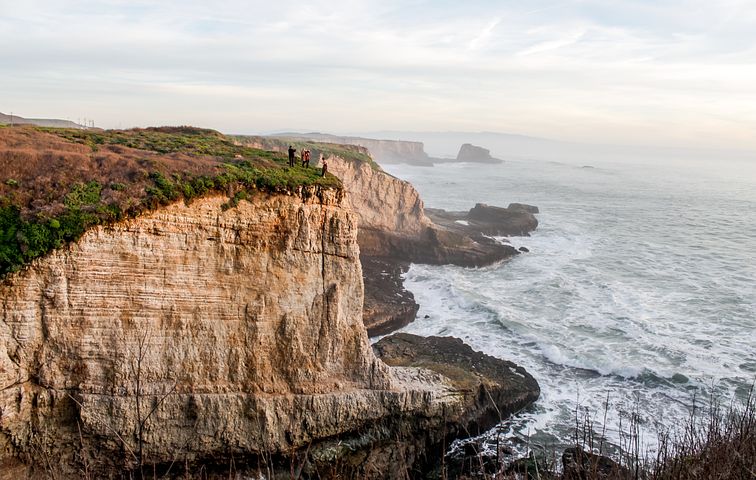If you’re ever fortunate enough to be driving along the Great Ocean Road, there is one tourist highlight you just cant miss, “The Twelve Apostles”, in the Southern Ocean of Victoria’s majestic coastline.
When you cast your eyes out to the choppy seas, scattered along the coast are glorious free standing limestone stacks caused over the years by erosion.
The Twelve Apostles were formed over twenty million years ago when the land once stretched out further with the stacks being one with the mainland. However years and years of harsh weather, rough stormy seas, and salt water waves beating against the cliff tops, took its toll on the land, and the result was rock separation. Eventually caves started to emerge in the form of arches, but they to became a casualty of the conditions and collapsed, leaving behind large rock pillars up to 45 metres high, significantly separate from the mainland.
Even though they are called “The Twelve Apostles” there are only 8 left. There were nine, but in 2005, there was another collapse. It’s inevitable that at some point they will all completely disappear, which is why people should embrace their splendour right now.
Before it was known as the Twelve Apostles it was known as “Sow and Pigs”, the sow being Muttonbird Island and the pigs being the limestone stacks. There was really no need to change the name, however, from a marketing point of view, the council thought it better fro attract tourism.
The area where the Apostiles are located is called “Shipwreck Coast”. It was named this after the many foundered ships that sailed in from Europe, full of prospectors headed for the Victorian goldfields of Ballarat and Bendigo back in the 1800’s.
With many shipping companies in competition to provide the fastest passage to Melbourne, this meant navigating some of the wildest oceans in search of a port. With the ocean pounding fiercely into the cliffs and stacks, one can easily imagine the terror knowing their ship was doomed.
There are many viewing platforms and carparks along “The Great Ocean Road” unless you choose to take a 20 minute helicopter ride over the top and beyond. Flights depart throughout the day from a heliport situated behind the Visitors Centre. Depending on the length of your flight, you might like to also take in Loch Ard Gorge, London Bridge, The Grotto, The bay of Islands, and the entire shipwreck coast all the way up to Cape Otway, site of the oldest lighthouse in Australia.
The best viewing time from the viewing platform is at dawn or dusk, when you might also see little penguins.
It’s about a 4 – 5 hour scenic drive from Melbourne via Geelong along the Great Ocean Road to the Twelve Apostles. But for those who don’t wish to drive back the same day, make a weekend of it, there’s plenty of accommodation down that way.


